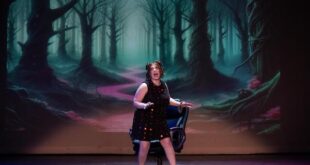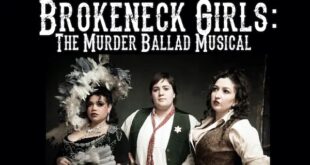New census data puts precise numbers to what was already well known: New Orleans lost 29% of its population in the wake of Hurricane Katrina.
But the city’s cultural heart seems to be thriving. We visited just after Christmas, during a cold spell, expecting things to be a bit slow. But no. True, the 40-degree weather was keeping people off windswept Jackson Square…
But lines stretched down the street outside popular restaurants and clubs in the French Quarter. Musicians of all ages and races ignored the cold to entertain the crowds in the streets.
Groups of tourists from all over congregated for walking tours. Beignets oozed grease; the powdered sugar flew. Regulars and tourists crowded into Tipitina’s to dance the night away, the jazz clubs on Frenchmen Street were packed, there were oysters a-plenty to eat, and New Orleans Saints fever burned hot (the team hadn’t been knocked out of the playoffs yet).
Paying respects to the dead was part of our itinerary. I was excited to discover the tomb of the great chess master Paul Morphy…
…and to visit the historic Beauregard-Keyes house where novelist Frances Parkinson Keyes collected books about Morphy in preparation for writing her own.
We loved the distinctive architecture of the French Quarter, and the mansions of the Garden District.
And we managed to find the Jewish deli.
On our last day it warmed up, and art came out to play:
And we paid our respects to the great muddy Mississippi.
Not everything is hunky-dory, of course. The French Quarter and Garden District were mostly spared from flooding, but much remains un-rebuilt in the affected areas, and as the census figures show, huge numbers of displaced people haven’t returned. The park at Congo Square, just outside the Quarter, remains closed to the public, for reasons I gather are more political than infrastructural. This picture was taken through the fence:
Maybe next time we get down to New Orleans the park will have reopened. Unfortunately, despite consultation with the world’s greatest experts on keeping the sea at bay (namely, engineers from Holland), the impression one gets from the scientific analysis portion of the impressive Katrina exhibit at the Presbytère is that the city isn’t viable in the long term. Too many decades of human mismanagement and natural forces have combined to make it too vulnerable to erosion.
Still, let’s hope for many more years of music and food and celebration in the unique city of New Orleans, a place unlike any other in the United States, a place that feels more European than American, more international than national. And as for the Saints…wait till next year! Who dat?
 Blogcritics The critical lens on today's culture & entertainment
Blogcritics The critical lens on today's culture & entertainment



